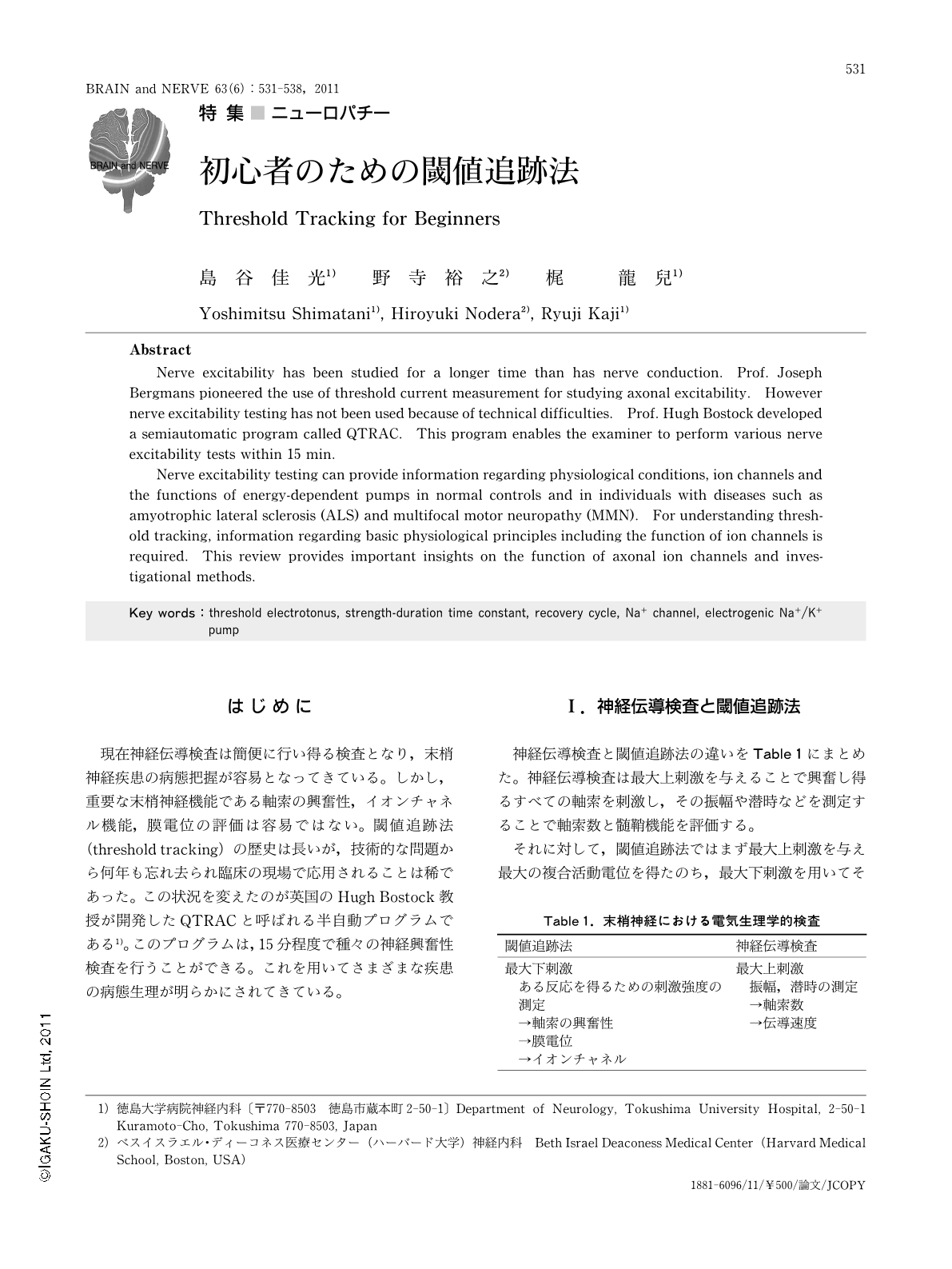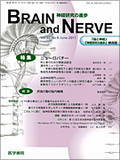Japanese
English
- 有料閲覧
- Abstract 文献概要
- 1ページ目 Look Inside
- 参考文献 Reference
はじめに
現在神経伝導検査は簡便に行い得る検査となり,末梢神経疾患の病態把握が容易となってきている。しかし,重要な末梢神経機能である軸索の興奮性,イオンチャネル機能,膜電位の評価は容易ではない。閾値追跡法(threshold tracking)の歴史は長いが,技術的な問題から何年も忘れ去られ臨床の現場で応用されることは稀であった。この状況を変えたのが英国のHugh Bostock教授が開発したQTRACと呼ばれる半自動プログラムである1)。このプログラムは,15分程度で種々の神経興奮性検査を行うことができる。これを用いてさまざまな疾患の病態生理が明らかにされてきている。
Abstract
Nerve excitability has been studied for a longer time than has nerve conduction. Prof. Joseph Bergmans pioneered the use of threshold current measurement for studying axonal excitability. However nerve excitability testing has not been used because of technical difficulties. Prof. Hugh Bostock developed a semiautomatic program called QTRAC. This program enables the examiner to perform various nerve excitability tests within 15 min.
Nerve excitability testing can provide information regarding physiological conditions,ion channels and the functions of energy-dependent pumps in normal controls and in individuals with diseases such as amyotrophic lateral sclerosis (ALS) and multifocal motor neuropathy (MMN). For understanding threshold tracking,information regarding basic physiological principles including the function of ion channels is required. This review provides important insights on the function of axonal ion channels and investigational methods.

Copyright © 2011, Igaku-Shoin Ltd. All rights reserved.


